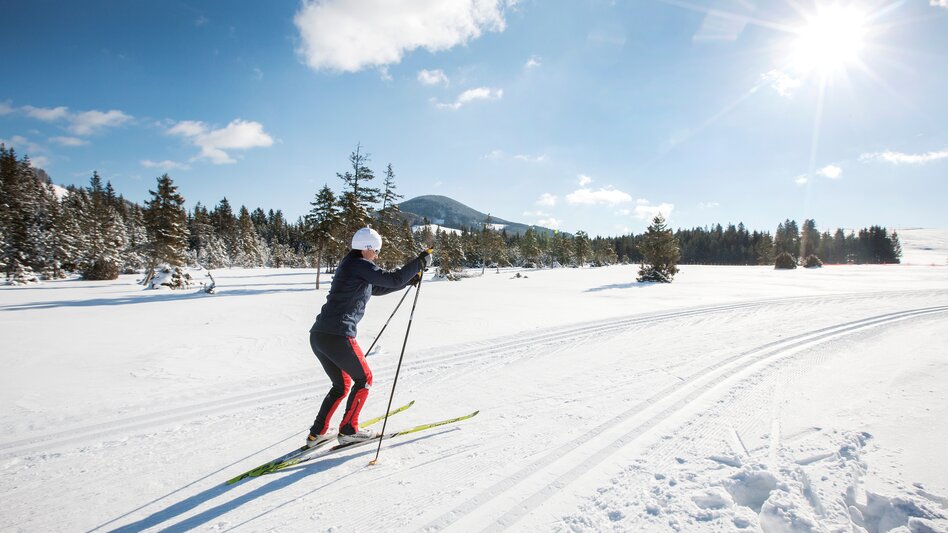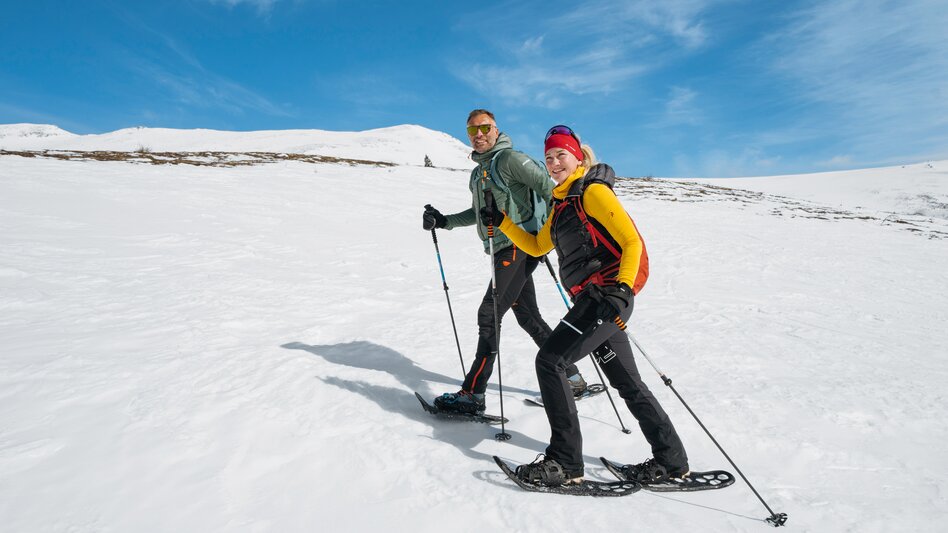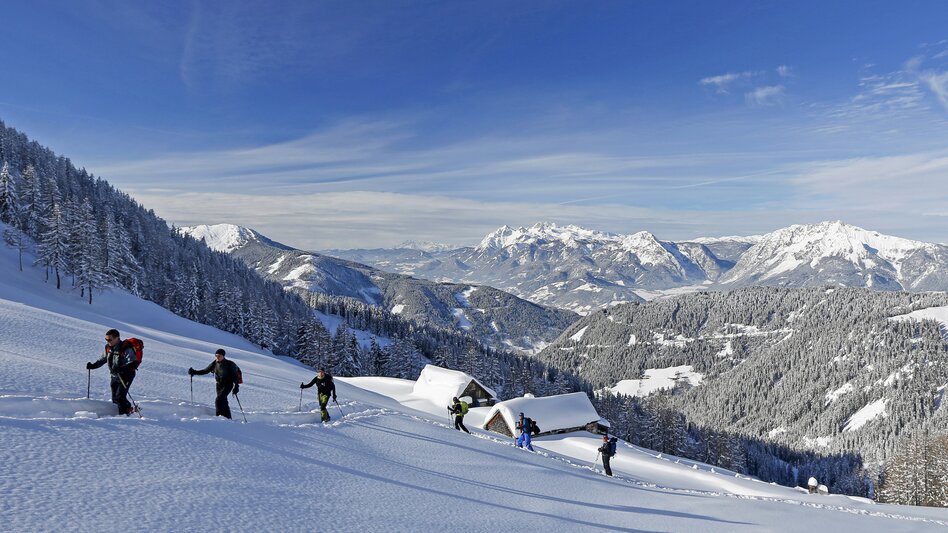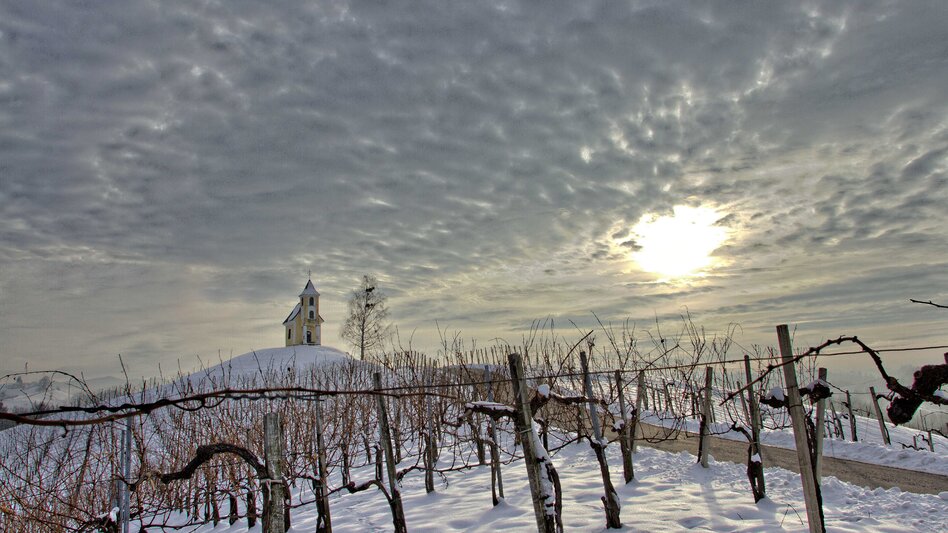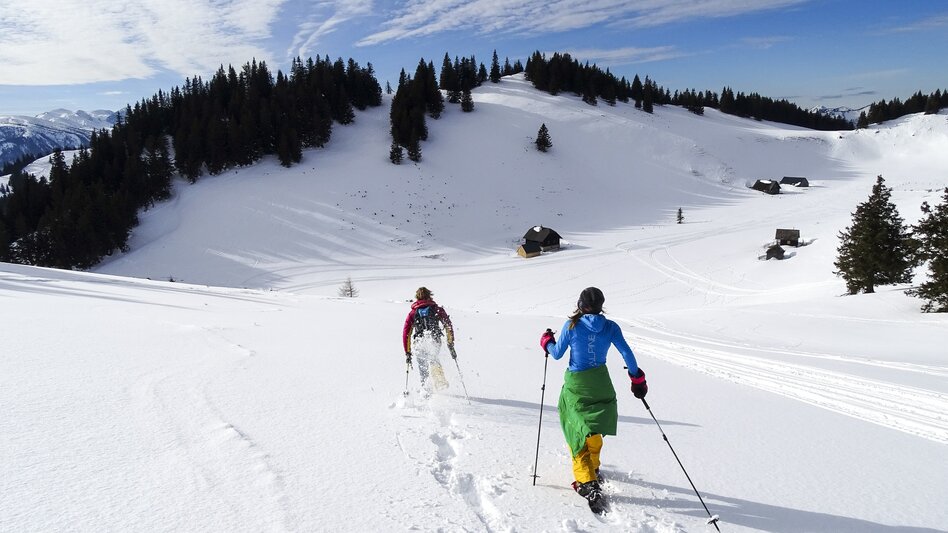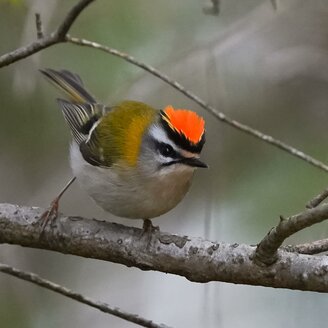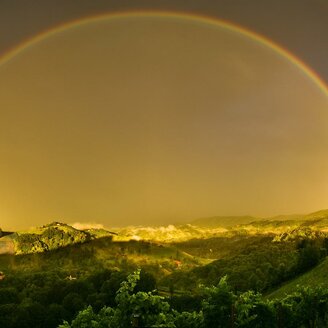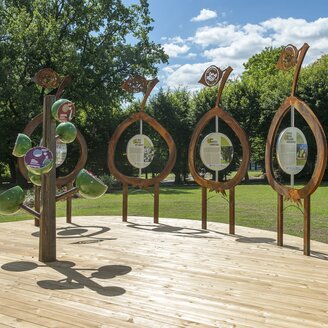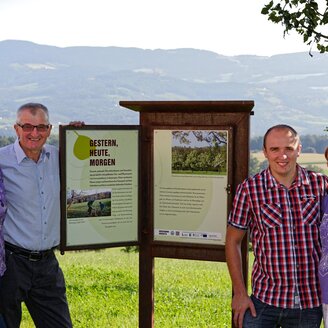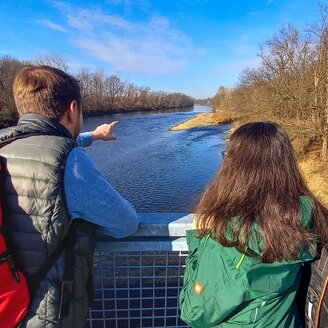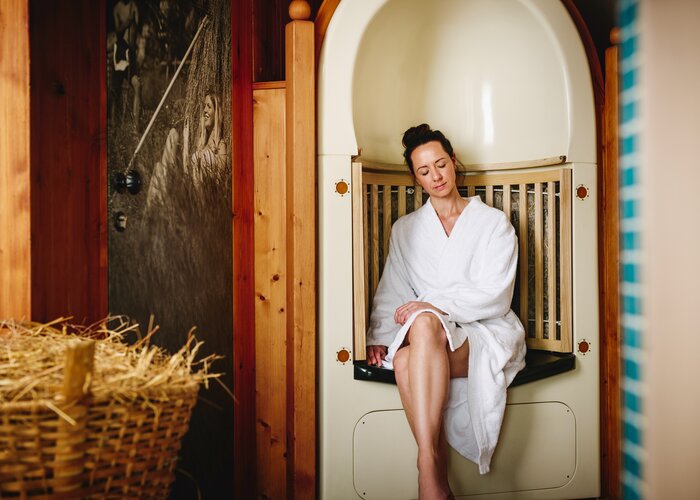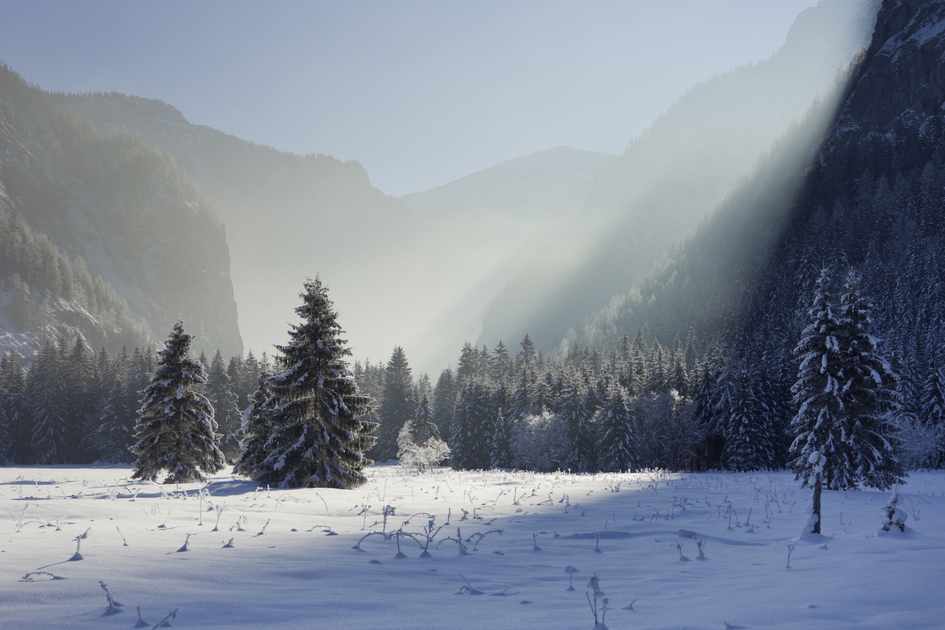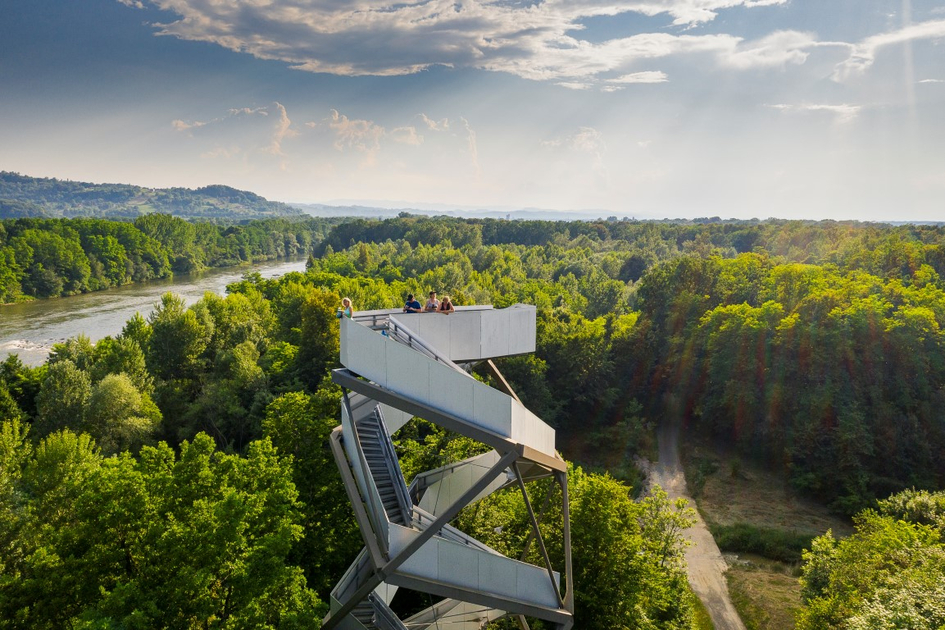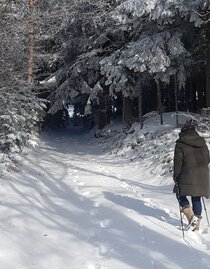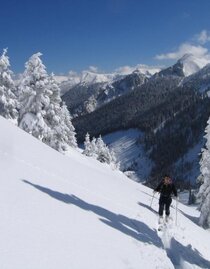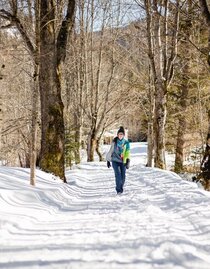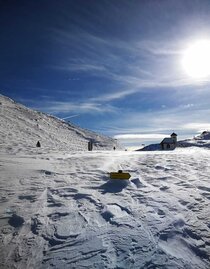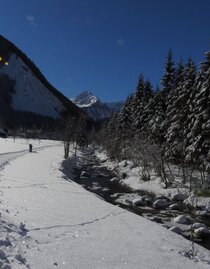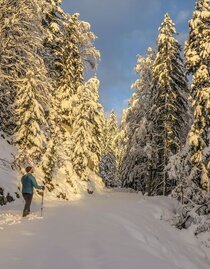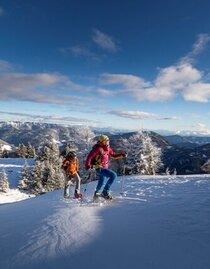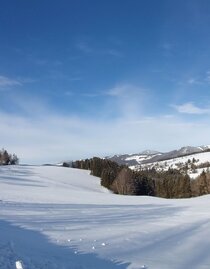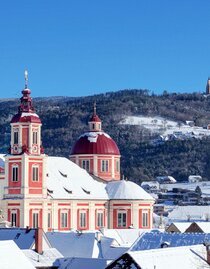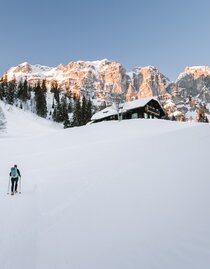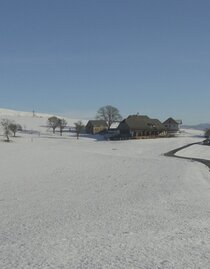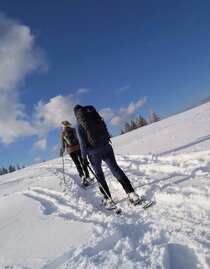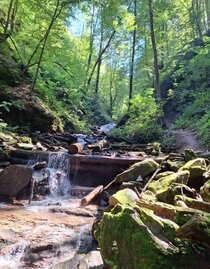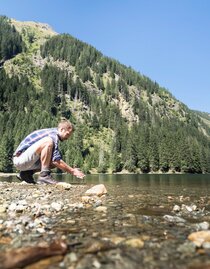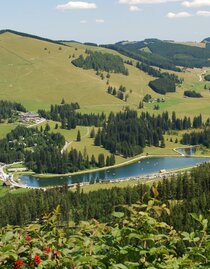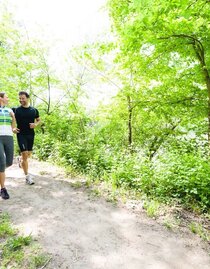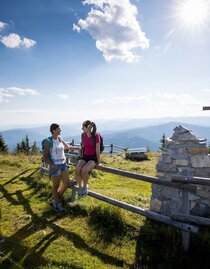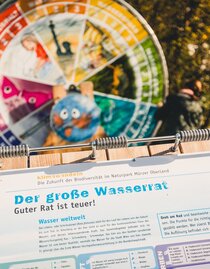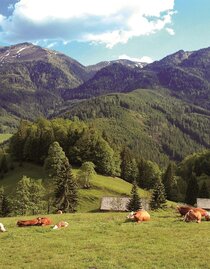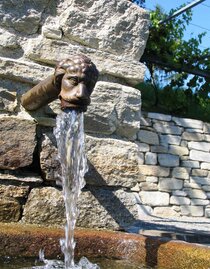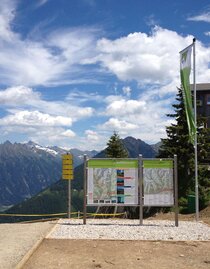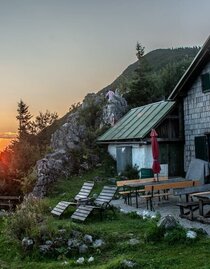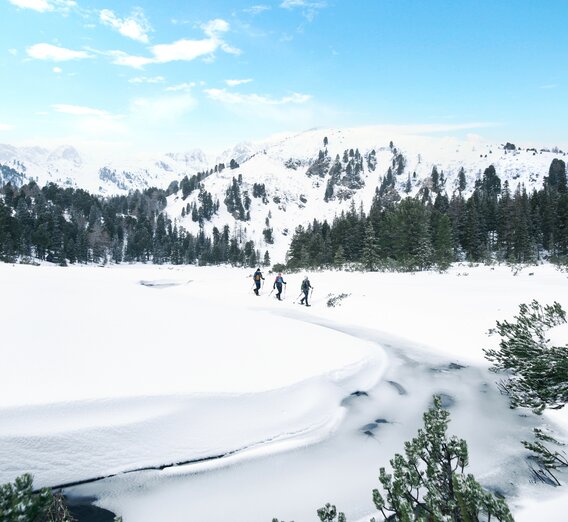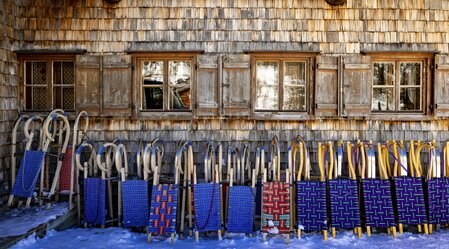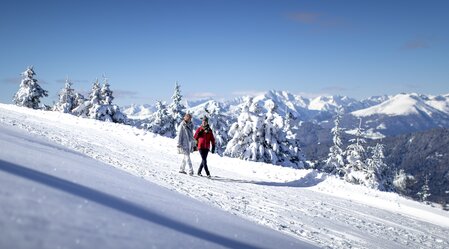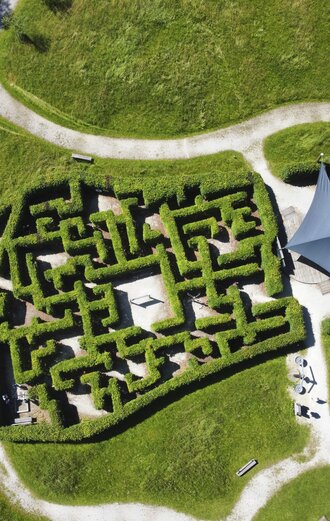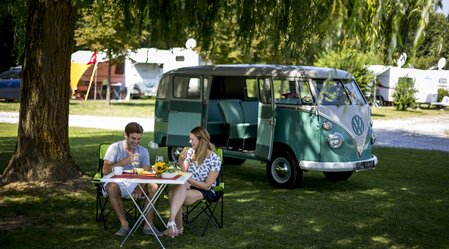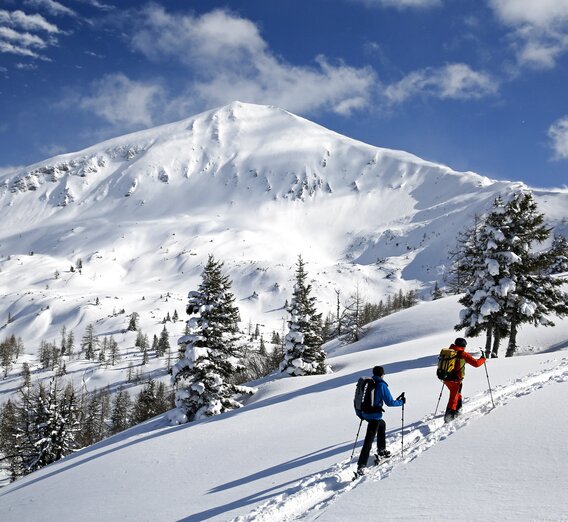

National park & Nature Parks in Styria
Quiet and peaceful, yet full of life – nature's diversity in the green heart of Austria ranges from vineyards and alpine pastures to forest ponds, rivers and orchard meadows.
These landscapes are good for body and soul, which also makes nature an essential element of the Grünkraft Steiermark offers.
Natural treasures of Styria
One national park, seven nature parks, one UNESCO biosphere park and more than 50 Natura 2000 European protected areas are among the natural treasures of Styria. They all differ in character, which is shaped by the valuable natural as well as cultural landscapes that are part of them.
The impressive Gesäuse National Park
With an area of 12,000 hectares, Gesäuse National Park is almost 35 times the size of Central Park in New York. In total, it occupies 0.7 percent of the area of the federal state of Styria, and it's one of its most beautiful natural treasures:
- The areas along the untamed waters of the river Enns are some of the last breeding grounds for sandpipers.
- The wild forests are left pristine: Endemic rarities such as the dianthus plumarius blandus – a subspecies of the cottage pink and unique in the world – grow on the impressive rock faces on the left and right banks of the Enns.
- The natural habitats of forest, water, rock and alpine pastures contribute to the high biodiversity of Gesäuse National Park. Insects in particular feel right at home there. More than 1,230 butterfly species have already been identified in the national park.
- What is special about Gesäuse National Park is that nature can develop freely, and processes such as avalanches or windthrows are allowed to happen. On about three quarters of the total area, forests continue to develop. Old trees die and make way for new ones. Rivers also get to choose their natural course. They are allowed to overflow their banks and thus reshape their surroundings.
Gesäuse National Park is best experienced together with a seasoned National Park Ranger or on rafting and kayaking tours on the rivers Enns or Salza. For the latter, there are marked places to get in and out of the river, which can be used at set times.
The two visitor centres – Weidendom Adventure Centre and the Gstatterboden National Park Pavilion – offer opportunities to delve even deeper into the multifaceted world of natural phenomena at Gesäuse National Park. The living structure of the Weidendom ("willow dome") on the banks of the Enns with its research workshop area and the walk-in ecological footprint is particularly impressive.
The six themed trails through the national park are especially exciting for families with children. Adventure-seekers can follow in the footsteps of Wild John on the forest trail that starts at Weidendom car park, for instance, and then explore the Johnsbachtal valley. Immediately afterwards, they can continue their tour of discovery on the Rauchboden Trail. Here, stunning views of the Enns below and the imposing rock faces of the Gesäuse above will amaze visitors of all ages.
Hikers and mountaineers get their money's worth on the numerous marked long-distance hiking trails and via ferratas. On the Luchstrail, they can experience three unique protected areas – Gesäuse National Park, Limestone Alps National Park and Dürrenstein Wilderness Area – at their wild and beautiful best.
The via ferratas in the Gesäuse National Park were created in harmony with nature and offer challenging tours with magnificent views. There's also a variety of other trails available for all types of preferences and requirements, from accessible walking trails to difficult climbing tours.
Adventure tip: The nights in the Gesäuse are among the darkest in all of Europe. During "Sternderl-Schauen" ("stargazing") at Weidendom Adventure Centre, visitors can see up to 6,000 stars in Austria's dark night sky. Stargazing is especially beautiful at new moon. On these days, shooting stars shoot across the sky, and stars that are thousands of light years away seem close enough to touch.
Nature Park experiences at a glance
The Styrian Red Beech Paradise
UNESCO WORLD NATURAL HERITAGE Dürrenstein-LASSINGtal
The wilderness area around the Lassingbach, which would be designated a UNESCO World Heritage Site in 2023, covers an area of 3,500 hectares and thus the same number of football fields. Located in the immediate vicinity of the Gesäuse National Park and the Steirische Eisenwurzen Nature & Geopark, guided tours of the wilderness area are also offered.
Landscapes of international geological importance
THE UNESCO GLOBAL GEOPARK STEIRISCHE EISENWURZEN
Since 2002, the Eisenwurzen Nature Park has also been allowed to call itself a European Geopark, and in 2004 it became a member of the "Global Geopark" network under the auspices of UNESCO. In 2015 followed the recognition as "UNESCO Global Geopark", as part of the UNESCO World Heritage. In the GeoDorf Gams with the GeoPath of the same name, during guided tours in the Arzberghöhle and the Kraushöhle or during hikes through the Nothklamm and Palfauer Wasserlochklamm, geology, ecology and culture can be experienced.
A habitat for endangered animal and plant species
The multi-faceted UNESCO Lower Mura Valley Biosphere Reserve in Styria
Since June 2019, Austria has a fourth UNESCO biosphere park: the Lower Mura Valley Biosphere Reserve in Styria between Bad Radkersburg and Mureck. The impressive river landscape covers a total of 13,000 hectares. And with its natural river dynamics, the Mur constantly creates new habitats for countless endangered animal and plant species, including more than 300 types of birds. Numerous fish also take advantage of the river system for their migrations.
Last but not least, intact floodplains along the Austrian-Slovenian border protect settlements from flooding and ensure an ample supply of clean drinking water.
This unique natural jewel is not a museum, but a thriving recreational space for a variety of activities: So-called "River'scools" boards at important locations throughout the biosphere reserve provide information about the local flora and fauna.
Tip: Be sure to bring binoculars or a magnifying glass, because there is a lot to discover and marvel at!
Donnersdorf is an ideal starting point for exciting adventures along the well-developed network of trails through the river Mur's floodplains. With a bit of luck you might even spot a white-tailed eagle, one of the rarest birds in Styria. At the Murturm lookout tower in Mureck, you can get a bird's eye view of the area.
